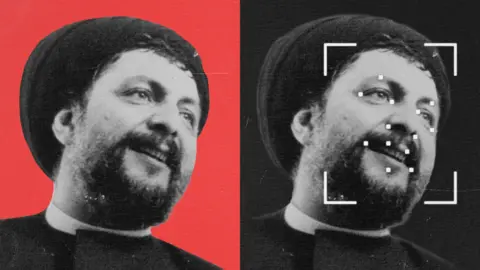Musa al-Sadr has been missing since 1978. A body recently discovered in a secret mortuary may hold answers to the mystery surrounding his disappearance. Professor Hassan Ugail from Bradford University is leading the investigation using advanced image recognition software on a decomposed photograph taken by a journalist in 2011.
The body, speculated to be that of Sadr, was seen by journalist Kassem Hamadé during the Arab Spring in Libya. Despite varying theories about Sadr's fate, from his alleged murder to claims he's still alive, the recent investigation aims to provide clarity.
Sadr was a significant religious and political figure among Shia Muslims. His disappearance is intricately connected to a pivotal moment in Middle Eastern history, coinciding with the prelude to the Iranian Revolution in 1978. The analysis of the corpse, which bore injuries consistent with execution, scoring in the high 60s on a similarity scale against images of Sadr, suggests a high probability that it could indeed be him.
The outcome of this investigation could alter the historical understanding of Sadr's legacy and the political climate of the region, with reverberations felt by his followers—who still hold commemorations for him each year—seeking closure or confirmation of their beliefs about his fate.
As the team continues to explore the implications of their findings, they face the challenges of geopolitical sensitivities and the ramifications for those still loyal to Sadr's legacy.





















